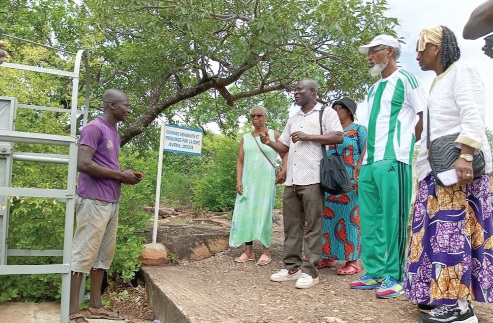In a powerful journey of memory and reconciliation, descendants of enslaved Africans have retraced the painful paths of their ancestors to reconnect with their heritage in Northern Ghana and Togo regions once central to West Africa’s brutal slave trade.
Among them are Charmine, John, and Marian, born in the Caribbean and currently based in New York. They recently traveled to Nok, a remote area in northern Togo, and to Salaga in Ghana historical centers where thousands of Africans were captured, sold, and trafficked during the transatlantic slave trade.
Retracing the Footsteps of Their Ancestors
The town of Nok, once a refuge for the Moba people, holds deep historical significance. The Moba fled there to escape Tchokosi slave raiders, who routinely kidnapped people from surrounding communities to sell to European traders. For Charmine, a Trinidadian, the visit was more than symbolic it was a profound personal reckoning.
“Coming here has given me a sense of wholeness,” she said, standing in the land where her ancestors may have once walked or fled for their lives.
Salaga: A Slave Market Remembered
From Nok, the group journeyed to Salaga, a once-thriving commercial hub in northern Ghana known for trading salt, kola nuts and human lives. Enslaved Africans captured from regions like Nok were forced to march in chains for days to reach Salaga, with many dying en route.
Survivors were auctioned at Salaga’s notorious slave market, displayed like livestock for European and American buyers. Today, remnants of that harrowing past iron shackles, rusted chains, and Danish firearms are preserved in a modest local museum. These relics serve as a stark reminder of a trade that shattered countless families and uprooted generations.
Slavery in the region was officially abolished only in the late 19th century, following British colonial intervention.
Wells of Cleansing, Wells of Memory
Just outside Salaga, ancient slave wells once used to wash enslaved people before sale have been restored by the Ghana Tourism Authority in 2024. For many visitors, the wells are sacred. Some believe drinking from them brings spiritual connection to ancestors who were torn from their homeland.
Local oral history continues to keep the memory of these atrocities alive, even as descendants of the enslaved arrive to reclaim the legacy once denied them.
From Nakpanduri to New York: The Search for Identity
In Nakpanduri, a community that also endured heavy slave raids, John Francis said he experienced an overwhelming sense of homecoming. “I feel I have found a missing piece of myself,” he shared, holding up photographs taken during the visit to commemorate his reconnection with his roots.
For many African descendants in the diaspora, these journeys mark the start of a broader healing process one that not only confronts the horrors of history but also restores lost identities and cultural ties.
A Future Rooted in Memory
As Ghana and neighboring Togo continue efforts to preserve and promote their historical sites linked to the transatlantic slave trade, descendants of the enslaved are increasingly making pilgrimages back — turning pain into purpose and forging new bonds with the land of their ancestors.
With initiatives like the Year of Return and support from cultural institutions, West Africa is embracing a new chapter: one of remembrance, restoration, and reconnection.


